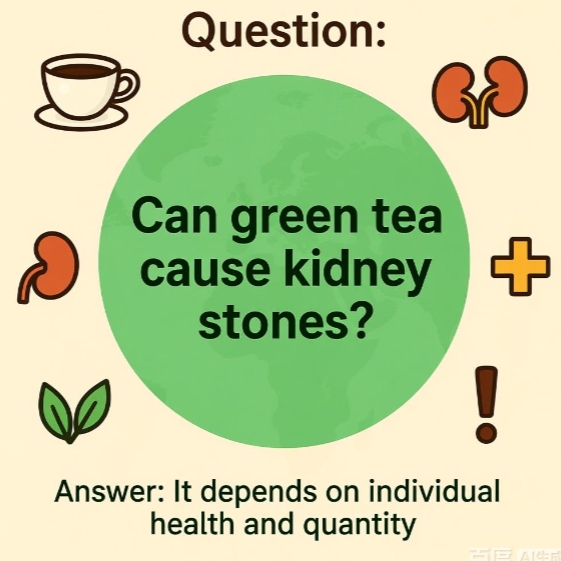Worried that your daily cup of green tea might lead to kidney stones? Relax: studies consistently show that green tea does not raise the risk, and may actually lower it.
How kidney stones form
Stones develop when urine becomes oversaturated with calcium, oxalate, uric acid, or other solutes. Low urine volume, high sodium, and low citrate are common culprits.
Green tea’s chemistry
Green tea contains caffeine, catechins, and small amounts of oxalate. The caffeine boosts urine output, while catechins act as antioxidants that interfere with crystal clumping. The oxalate in one cup is modest—far below what is found in spinach, nuts, or chocolate.
Evidence from large cohorts
A 0.5-million-person Chinese cohort found that people who drank ≥3 cups of tea per day had a 27 % lower risk of forming stones compared with non-drinkers; the protective trend held for green tea specifically . Similar results have been reported in U.S. and U.K. cohorts.
Practical advice
- Keep total fluid intake at 2–3 L per day; green tea counts toward that goal.
- Brew with tap or spring water—avoid very hard water if you are prone to calcium stones.
- Skip loading the cup with extra sugar; excess calories can raise urine calcium.
- If you have had calcium-oxalate stones and follow a low-oxalate diet, count each 8 oz of green tea as ~8 mg oxalate—still well within daily limits.
Bottom line
Green tea is a hydrating, low-calorie beverage that appears to protect against kidney stones rather than cause them.
| Key point | Take-home message |
|---|---|
| Stone chemistry | Needs concentrated urine; green tea dilutes it. |
| Oxalate content | Low per cup; not a driving factor. |
| Cohort data | ≥3 cups/day linked to lower stone risk . |
| Daily use | Safe for most stone formers; stay hydrated. |
